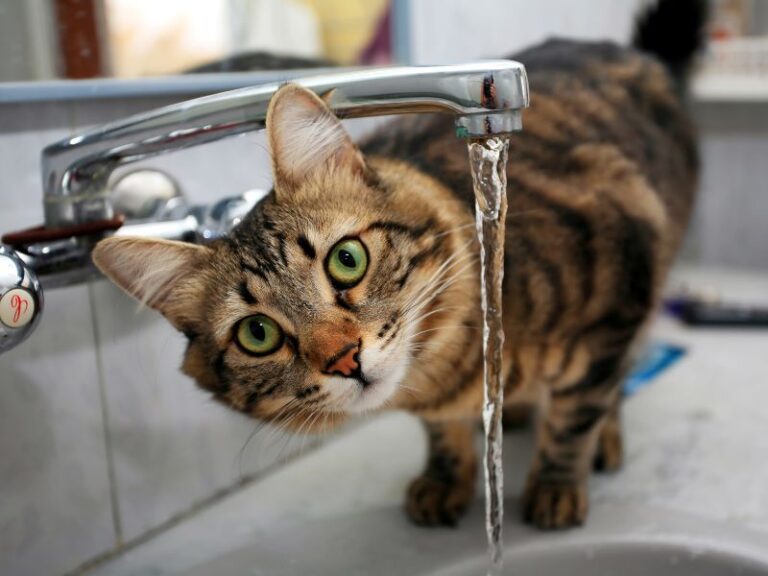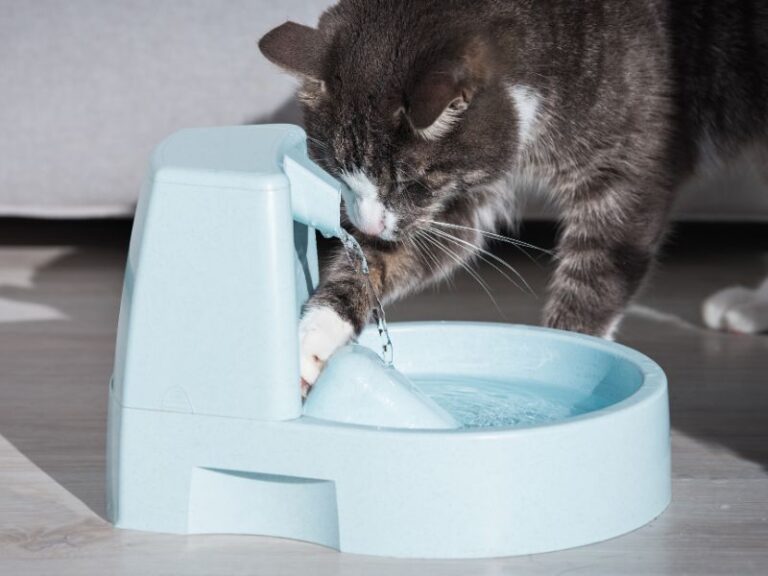Table of Contents
ToggleCats, those enigmatic and beloved companions, have captured our hearts with their playful antics and independent spirits. But beneath their fluffy exteriors lies a world of instinctual behaviors and natural processes, one of which is the complex and fascinating phenomenon of Cat Mating.
Understanding cat mating is not merely an academic pursuit; it’s a key element in responsible pet ownership and feline well-being. Whether you’re a cat enthusiast, a breeder, or a concerned cat parent, delving into the intricacies of cat mating and reproduction is essential. It offers insights into their unique biology, behavior, and the critical role humans play in ensuring the health and happiness of our feline friends.
In this comprehensive guide, we embark on a journey to uncover the mysteries of cat mating, from the mesmerizing dance of courtship to the miracle of birth and kitten care. Along the way, we’ll discuss the significance of the Cat Mating process, decode the cat heat cycle, explore mating behaviors, and provide valuable insights into responsible breeding and feline care.
The Cat Heat Cycle
The cat heat cycle, scientifically known as estrus, is a critical aspect of feline reproduction. Understanding this cycle is fundamental for cat owners, breeders, and anyone interested in the well-being of female cats.
Relevant >> Signs Your Cat Is in Heat and How to Care for Them
Behavioral Changes
During the cat heat cycle, you’ll notice distinct behavioral changes in your female feline companion. These changes often include:
- Increased Vocalization: Female cats in heat tend to become more vocal, often emitting loud, persistent yowls and meows. This vocalization is their way of signaling their readiness to mate.
- Agitation and Restlessness: Cats in estrus may appear more restless than usual. They might pace, roll around, or exhibit an anxious demeanor.
- Attention-Seeking Behavior: Female cats may become exceptionally affectionate and seek more attention from their owners. They might rub against people and objects more frequently.
- Elevated Affection Toward Objects: Some female cats may display heightened affection toward inanimate objects, such as pillows or stuffed animals.
Physical Changes
In addition to behavioral shifts, the cat heat cycle brings about notable physical changes:
- Swelling of the Genital Area: One of the most noticeable physical changes is the swelling of the vulva. It becomes more prominent and may have a reddish appearance.
- Increased Urination: Female cats may urinate more frequently during estrus, often marking their territory with strong-smelling urine.
- Posture Changes: Cats in heat may assume a distinctive posture known as “lordosis.” In this position, the cat lowers her front end while raising her hindquarters and tail, making it easier for a male cat to mount.
- Tail Twitching: Some cats exhibit tail twitching or quivering when petted near the base of their tail. This is a common response during the heat cycle.
Mating Behavior and Process
Cat mating is a complex interplay of instinctual behaviors, and understanding these behaviors is key to comprehending the world of feline reproduction.
Courting and Mating Behaviors
Male and female cats engage in a fascinating dance of courtship when they are ready to mate. Here are some notable behaviors:
- Vocalizations: Cats communicate their interest and readiness through vocalizations. Females may vocalize to attract males, and males often respond with unique sounds.
- Body Language: Both males and females exhibit specific body language cues during courtship. A female in heat may assume the lordosis posture, signaling her willingness to mate. Males, on the other hand, may show heightened affection and follow the female closely.
- Scent Marking: Cats are prolific scent markers. During mating, they may rub their scent glands against objects or their partner. This marks territory and communicates their availability.
The Step-by-Step Mating Process
The mating process in cats is orchestrated with precision. Here’s a step-by-step breakdown:
- Female’s Invitation: It typically begins with the female in heat actively seeking the attention of a male. Her vocalizations and scent marking play a vital role in attracting potential mates.
- Courtship: The male cat engages in courtship behaviors, which may include nuzzling, grooming, and additional vocalizations. This stage is crucial for establishing compatibility.
- Mating: Once both cats are receptive, mating occurs. The male mounts the female and copulation takes place, usually lasting only a few minutes.
- Post-Mating Behavior: After mating, some cats may undergo a period of rest or post-mating aggression. It’s essential to monitor their interactions during this time.
Understanding the nuances of cat mating behaviors and the intricacies of the mating process provides valuable insights into the reproductive cycle. Whether you’re considering breeding your cats or simply curious about their natural instincts, this knowledge enhances your ability to care for and appreciate these remarkable creatures.
Pregnancy and Care
After a successful mating, a female cat enters a remarkable phase of life: pregnancy. This period is marked by significant physical and behavioral changes, and it requires careful attention to ensure the health and well-being of both the mother and her future kittens.
Relevant >> How to Tell if a Cat Is Pregnant
Transition into Pregnancy
Once mating has occurred, a female cat’s body undergoes remarkable changes to support the developing kittens. Pregnancy typically lasts for around 63 to 65 days, but it can vary slightly. During this time, the female will exhibit several changes:
- Physical Changes: As the pregnancy progresses, you may notice physical changes such as a rounded abdomen and increased appetite.
- Behavioral Changes: Pregnant cats might become more affectionate or, conversely, seek more solitude. Their energy levels can vary.
- Nesting Instinct: As the due date approaches, many pregnant cats exhibit a nesting instinct, seeking out a quiet, comfortable place to give birth.
Gestation Periods and Physical Changes
Understanding the stages of gestation and the associated physical changes is crucial:
- First Trimester: During the initial weeks, there may be minimal outward signs of pregnancy. The embryos are implanting in the uterus.
- Second Trimester: Physical changes become more evident, including a noticeable increase in abdominal size.
- Third Trimester: The abdomen becomes significantly enlarged as the kittens continue to grow. You may even feel the kittens’ movements by gently palpating the abdomen.
Tips for Supporting a Pregnant Cat’s Health
To ensure the well-being of a pregnant cat and her future kittens, consider the following tips:
- Nutrition: Provide a balanced and high-quality diet tailored for pregnant cats. Consult with a veterinarian for dietary recommendations.
- Regular Vet Checkups: Schedule regular checkups with a veterinarian to monitor the pregnancy’s progress and address any health concerns.
- Quiet and Comfortable Space: Create a quiet, safe, and comfortable space for the pregnant cat to give birth and care for her kittens.
- Monitoring: Keep a close eye on the cat’s behavior and physical condition, especially as the due date approaches.
Birth and Kitten Care
The arrival of a litter of kittens is a momentous occasion, filled with wonder and excitement. It’s essential to be prepared and informed about the birthing process and how to care for the precious newborns.
The Birthing Process
Cat birth, also known as parturition, typically unfolds in several stages:
- Nesting: As the due date nears, the pregnant cat often seeks a quiet, secluded place to give birth. This is the nesting stage, where she prepares her chosen spot for the arrival of her kittens.
- Labor: Labor begins with uterine contractions, often causing the cat to vocalize or appear restless. You may notice her licking her genitals and abdomen during this stage.
- Birth of Kittens: Kittens are usually born every 15 to 30 minutes. The mother cat will clean each kitten and sever the umbilical cord with her teeth. She may also eat the placenta, a natural behavior that provides essential nutrients.
- Afterbirth: After each kitten is born, the mother may expel the placenta. This is a normal part of the birthing process.
What to Expect
It’s crucial to remain vigilant during the birthing process. While most cats handle it naturally, there are times when complications can arise. Be prepared to seek veterinary assistance if:
- Labor lasts longer than 24 hours without the birth of kittens.
- The cat appears distressed, in severe pain, or is bleeding excessively.
- A kitten becomes stuck in the birth canal.
Caring for Newborn Kittens
Once the kittens are born, their mother will handle much of their care. However, you can support her and ensure the health of the kittens by:
- Providing a Warm Environment: Keep the birthing area warm and draft-free to prevent the kittens from getting chilled.
- Ensuring Nursing: Ensure that each kitten latches onto the mother’s nipples and feeds regularly. If you notice any kittens not nursing, consult a veterinarian.
- Monitoring Health: Keep a close eye on the kittens’ health. Ensure they are gaining weight, eliminating waste, and appear content.
- Minimizing Disturbances: Limit disturbances in the birthing area during the early days. Allow the mother to care for her kittens without unnecessary interruptions.
Final Words
In the intricate world of cat mating and reproduction, knowledge is power. Understanding the behaviors, processes, and responsibilities that come with feline reproduction is not just a matter of curiosity; it’s an essential aspect of being a responsible cat owner and breeder. The magic of feline life, from the mesmerizing courtship rituals to the birth of adorable kittens, is a testament to the wonders of nature. It’s our duty to ensure that these natural processes are guided by care, ethics, and compassion.
Responsible cat mating involves more than just allowing cats to follow their instincts. It requires thoughtful planning, proper healthcare, and a commitment to the well-being of both the parents and their offspring. By embracing responsible breeding practices, we can contribute to the health and happiness of our feline companions, ensuring that each new generation of kittens begins its life journey on the right paw.
In summary, cat mating and reproduction are complex but captivating aspects of feline life. By understanding the cat heat cycle, mating behaviors, and the birthing process, we gain insight into our cats’ natural instincts. Remember that responsible cat mating is about more than just producing kittens; it’s about promoting the welfare of these incredible creatures from the very start. With knowledge, care, and love, we can nurture a deeper connection with our feline friends and help them thrive in our shared journey through life.






